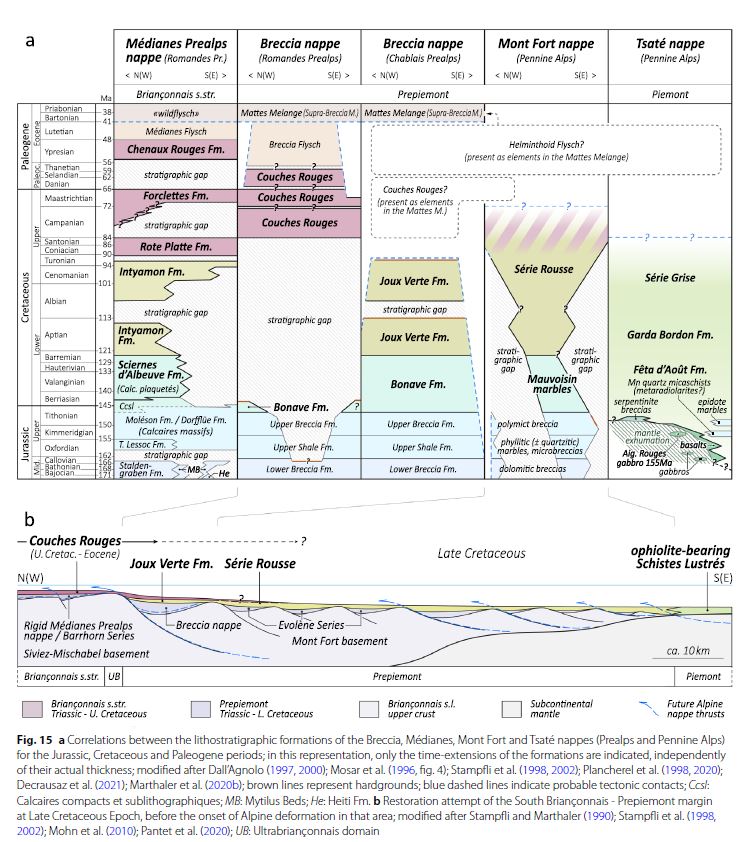Schistes Lustrés in a hyper‑extended continental margin setting and reinterpretation of the limit between the Mont Fort and Tsaté nappes (Middle and Upper Penninics, Western Swiss Alps)
Authors: Adrien Pantet, Jean-Luc Epard, Henri Masson, Claudia Baumgartner-Mora, Peter Baumgartner and Lukas Baumgartner
ABSTRACT
The Schistes Lustrés form a large and complex unit at the top of the Penninic nappe stack of the Alpine belt. Calcschists, partly of Late Cretaceous age, constitute the dominant lithology. They are closely associated both with blueschist facies Piemont-Ligurian ophiolites and continent-derived Mesozoic metasediments. The question of whether the Schistes Lustrés originated on continental or oceanic crust has been extensively debated among Alpine geologists and is locally still controversial. We present here new structural and stratigraphic observations, as well as Raman graphite thermometry (RSCM) data, for the Schistes Lustrés complex of the Combin zone in the Hérens, Dix and Bagnes valleys. Our observations indicate that the basal part of this Schistes Lustrés complex (defined as the Série Rousse) is systematically devoid of ophiolitic material, and rests in stratigraphic contact on the underlying Triassic – Lower Cretaceous metasediments and Paleozoic basement of the Mont Fort nappe (Prepiemont paleogeographic domain). The unconformity at the base of the Schistes Lustrés complex is interpreted as resulting from the sedimentation of the Série Rousse on a paleorelief formed by remnants of Jurassic normal fault scarps, and not as an Alpine tectonic contact, as previously proposed. The lithostratigraphic comparison with the Breccia nappe in the Prealps, as well as a foraminifer discovery, allows us to better constrain the age of the Série Rousse. It extends from the middle of the Early Cretaceous (Aptian?) to the Late Cretaceous (Campanian to earliest Maastrichtian?). In contrast, the upper contact of the Série Rousse with the ophiolite-bearing Schistes Lustrés clearly corresponds to an Alpine thrust. The thrust zone is underlined by thin and discontinuous slices of highly strained continental-margin derived Mesozoic metasediments (Frilihorn slices). RSCM data show that the recrystallization of the organic matter progressively increases on both sides towards this contact. This contact, internal to the Schistes Lustrés complex, is reinterpreted as the major tectonic contact separating the Middle Penninic Mont Fort nappe from the Upper Penninic Tsaté nappe (defined here as including only the ophiolite-bearing Schistes Lustrés and associated meta(ultra-)basites). This study clearly documents that the Schistes Lustrés consist of sediments either deposited on oceanic crust, showing locally preserved stratigraphic contacts with ophiolitic or serpentinized sub-continental mantle slivers, or sediments still resting stratigraphically on a former hyper-extended continental margin.

Article publié dans le Swiss Journal of Geosciences et disponible en libre accès ici.